Don't wanna be here? Send us removal request.
Text
Critical Analysis
Dubbelman, T. (2011). Playing the hero: How games take the concept of storytelling from representation to presentation. Journal of Media Practice, 12(2), 157–172. https://doi.org/10.1386/jmpr.12.2.157_1
For my critical analysis, I have chosen page 163-164 from Playing the hero: How games take the concept of storytelling from representation to presentation written by Teun Dubbelman who is a researcher and academic at the Department of Media and Communication at the University of Amsterdam. His work explores a culmination of technology and narratives and how they can inflence each other. I chose to write about pages 163-164 since these pages talk about representational and presentational logics which I find pertinent to my field of study as a filmmaker and animator. This essay critically examines the immersive qualities of these logics and their applications as well as their implications in narrative theory.
Dubbelman differentiates between presentational and representational logics by drawing from performance theory, theater studies to be exact. In representational theater the performance of the narrative is done in a way that only addresses the narrative’s world pretending what is beyond the stage is an extension of the narrative world ignoring the audience. Even though the performance takes place in the ‘here and now’ i.e. the present world, the audience is taken to the ‘there and then’ referring the the time and place the narrative occurs and objects and actors on stage become symbols of the world of ‘then and there’. The audience becomes a ghost-like presence in such scenarios, being able to experience the narrative in different places and different times while being physically absent in them. The author states that this is the case in theatre while being a strong example for representational logic is not exclusive to it. Conversely, presentational theater focuses on the opposite, i.e. it breaks the ‘fourth wall’ engaging the audience as if they were a part of the world. This type of a narrative creates a sense of immeadiacy where the audience is now a part of the narrative requiring involvement in it. For example movies like Deadpool and Bandersnatch from the Black Mirror series. This difference between the two logics have an impact on how the narrative affects the audience as in representational storytelling, the audience is transported to the narrative’s ‘spacio-temporal’ realm or ‘elsewhere’ in a mental sense as noted by Card. Understanding the nuances of these types of storytelling equips filmmakers to combine aspects and create immersive storytelling and world building to create varying experiences for audiences.
The author then discusses the implications of referring to the audience as ‘disembodied’ observers. Disembodied observers as described by the author, still possess the physical ability to emotionally engage with the narrative, empathize with characters, their emotions and struggles and the affect associated with the happenings on screen. The author further discusses that without our physical presence, the happenings on screen on on the stage would not make any sense and the narrative would not be fruitful. One cannot simple escape their existence while experiencing a narrative so rather the argument lies in whether the narrative acknowledges the existence of an audience or not. The Deadpool movies for example often break the wall communicating jokes and information to the audience without which the movies would not make sense.
The author then discusses the topic of ‘Narrative Immersion’ with a quote from Richard J. Gerrig’s Experiencing Narrative Worlds: On the Psychological Activities of Reading which serve as examples of immersion as the audience is reminded of their physical existence in the real world after being transported back by some sort of stimuli like the lights turning on in a movie theater. Dubbelman discusses the how presentational and representational logics achieve immersion. He says that both these modes notably alter our immediate perception of the world around us but do it in distinct ways. He notes that representational logic achieves this by absorbing the audience into the narrative’s alternate reality rendering the audience unaware of their surroundings. This can be commonly seen across platforms like cinema, film, literature and traditional theatre where the strength lies in capturing the audience’s attention by creating strong fictional worlds. The author refers to this phenomenon as the ‘representological’ mode where the audience is taken from here and now to the ‘then and there’ which aligns with Janet Murray’s definition of immersion i.e. “the sensation of being surrounded by a completely other reality”. This is also seen in representological and narrative driven games like ‘The Last of Us’ where the audience is pulled into a post-apocalyptic world or movies like Interstellar where the audiences experience multiple places and realities evoking a multitude of emotional reactions. On the other hand, presentational logic tends to bring the ‘then and there’ to here and now or in other words, the narrative is experienced by the audience in their immediate reality. This form of interaction relies in the direct involvement and engagement of the audience with their surroundings enabling them to make choices in real time. Open world role playing games like ‘Pokemon Go’, Skyrim and GTA 5 employ this mode of storytelling enabling audiences to engage with the world along with the latter offering a hybrid form of storytelling.
In conclusion, Dubbelman’s research into representational and presentational logics of storytelling offers me valuable insights about the dynamics of storytelling. The contrasting logics equips me with a better understanding of narratives can create a diverse sense of immersion that can capture and change the audience’s perceived reality. As a filmmaker, this can refine my storytelling technique and help create intellectually stimulating and emotionally resonant narratives whether it be through crafting immersive narrative worlds or participatory experiences. In an ever-evolving landscape of narratives and media this article has helped me understand some of the fundamentals behind immersive storytelling.
0 notes
Text
Readers
1.
Barricelli, B. R., Gadia, D., Rizzi, A., & Marini, D. L. R. (2016). Semiotics of virtual reality as a communication process. Behaviour & Information Technology, 35(11), 879–896. https://doi.org/10.1080/0144929X.2016.1212092
This article talks about how the medium of VR is extremely immersive and interactive and introduce a semiotic framework to analyze communication within thee environments. The tailor made framework made for VR introduces three components namely syntax, semantics and semiotics. The authors also include principles of generative semiotics where signs evolve and transform through interaction.
Owing to the immersivity and interactivity of VR, learning about such a semiotic framework would help me better understand and curate unique meanings and explore non-traditional narratives. A framework like this could help me create unique environments and understand the visual language and symbolism that goes into creating such content such as placement, lighting, etc.
2.
Baudrillard, J. (1993). Hyperreal America ∗ . Economy and Society, 22(2), 243–252. https://doi.org/10.1080/03085149300000014
Baudrillard’s ‘Hyperreal America’ is a critique on the American culture and how it is a specimen of the shift of real and tangible experiences to the of simulations and representations. Baudrillard talks about the idea of ‘Simulation and Simulacra’ and the precession of Simulacra while pointing to the real life examples of these concepts in current American society such as theme parks like Disneyland, where fiction feels more authentic than reality and the consumer culture that is rampant in the country where consumers derive meaning and identity from the consumption of goods, etc.
He warns us about the implications of living in a hyperreal world and how media and technology can influence our perception of what is real. I find this article useful as in a increasingly postmodern world it helps me look past and under what is implied and look and what is.
3.
Dosser, M. (2022). I’m gonna wreck it, again: the false dichotomy of “healthy” and “toxic” masculinity in Ralph Breaks the Internet. Critical Studies in Media Communication, 39(4), 333–346. https://doi.org/10.1080/15295036.2022.2067347
Dosser in his article talks about the shortcomings of the film ‘Ralph Breaks the Internet’ in addressing toxic masculinity in a deeper sense. The male protagonist Ralph, goes on a journey that critiques and looks down upon toxic masculine traits while still endorsing other traits such as being a protector due to his physical strength that feed straight back into it. He points out that addressing complex issues like ‘toxic masculinity’ need a deeper understanding and implying that such negative behavior can be corrected only by personal transformations without throwing light on the social and cultural factors that contribute it does not improve it.
This article provides me with a deeper critique and understanding of toxic masculinity. It has prompted me to think about the fact that a lot of social issues are multi-faceted and often have links with other social constructs such as race, religion and gender and as an animator and filmmaker, having a deeper of them would help me create more complex and diverse characters and narratives addressing such issues.
4.
Dubbelman, T. (2011). Playing the hero: How games take the concept of storytelling from representation to presentation. Journal of Media Practice, 12(2), 157–172. https://doi.org/10.1386/jmpr.12.2.157_1
This article talks about how video games have shifted traditional narratives from a passive experience in video games to and active decision-making experience. He talks about the limitations of structuralist narratology and how it does not translate well into the dynamic and participatory nature of video games. Dubbelman also talks about how the active player is both the performer and the audience in this medium which creates a deepened and immersive experience for the player enhancing the overall narrative for them.
Although I am not directly studying game design, I feel this structure of storytelling where the audience has consequence to the choices make can help in other fields such as film. Film being a purely passive experience can definitely benefit from such a structure, the article has helped me understand a framework where storytelling can evolve to fit other mediums creating a dynamic and personalised experience.
5.
Galbraith, P. W. (2013). Maid Cafés: The Affect of Fictional Characters in Akihabara, Japan. Asian Anthropology, 12(2), 104–125. https://doi.org/10.1080/1683478X.2013.854882
Based on Galbraith’s extensive fieldwork, he examines Maid Cafe’s as spaces of affective interaction centering on the relationships between patrons and the maids. These interactions are immersive and evoke emotions of personalized care, warmth and they play a bigger role in the customer experience which is described as emotionally fulfilling. Galbraith also addresses the misconceptions of western media that these places are exploitative by stating that these are performative spaces where the individuals navigate their social and emotional needs through a fictional framework while keeping interactions are kept professional yet playful.
As the author describes it it the archetype of ‘Moe’ coming into play where one body is supposedly a fictional character and their actions here are purely translational. This helped me understand affect theory better by being a physical representation of the same. This will also help me understand any characters I make in the future and the interaction between them and the audience.
6.
Grisard, D. (2017). Pink boys: colouring gender, gendering affect. NORMA, 13(3–4), 227–249. https://doi.org/10.1080/18902138.2017.1312956
In this article, Grisard talks about affect as a framework in understanding the colour pink and how its cultural significance is associated with nurturing, joy and vulnerability as well as being an emotional expression. He traces its history to a time when pink was associated with boys and blue for girls which eventually changed over time due to marketing and media. He throws light on how ‘pink boys’ go against societal norms that label pink as a feminine colour. These children when supported by caregivers are forced to balance their personal choices with societal norms fearing stigmatization and bullying. In such cases, they challenge convention asking as to why the affect and cultural dimensions of certain colours like pink are policed by society and gender.
As an animator, understanding the affective experience tied to colours helps me create and tell stories that are more grounded in reality and emotion. Understanding the stereotypes better helps in avoiding them and evoke nuanced and authentic emotion through colour choices.
7.
Martins, N., Mares, M. L., Booth, M., & McClain, A. (2024). Children’s perceptions of race and ethnicity in media: a 25-year update to children now. Journal of Applied Communication Research, 52(5), 555–575. https://doi.org/10.1080/00909882.2024.2389853
This article expands on a survey done in 1998 by ‘Children Now’ on children and young adults aged between 10 and 17 years old and their views on representation of race and ethnicity in current media. The findings say that representation of races apart from white characters showed improvements but were still not adequately represented despite the fact that children felt that it was important to see people of their ethnicity in media. The study also outlines the fact that having diverse characters belonging to different racial backgrounds also helps in racial acceptance amongst the youth.
This article helps me understand the intricacies and the need behind diverse characters and how they can have a strong effect on a younger audience. The authors also advocate for recommendations such as diversifying media content and portraying media characters in a non-stereotypical way and as an animator, I hope to able to learn from this and create inclusive storylines and characters to an impressionable audience.
8.
Meyer, U. (2013). Drawing from the body – the self, the gaze and the other in Boys’ Love manga. Journal of Graphic Novels and Comics, 4(1), 64–81. https://doi.org/10.1080/21504857.2013.784200
This article provides the reader with a comprehensive analysis of Boys’ Love manga often written and read but not limited to women and queer artists. Owing to its popularity not only in Japan but worldwide, it gives us a detailed and informed view on the self, the gaze and the other while enabling discussions about themes such as intimacy. Through the article, Meyer also sheds light on how this genre allows artists and writers to explore the complex themes of identity and desire as well as representation.
This article helped me look more closely into the genre of Boys’ Love and has provided a doorway into a less talked about ‘female gaze’. As a straight heterosexual male that has limited knowledge and exposure to queer directed media and media directed towards a female audience, this has helped me understand the concept behind the media and broaden my horizons.
9.
Thomas, L. M., & Glowacki, D. R. (2018). Seeing and feeling in VR: bodily perception in the gaps between layered realities. International Journal of Performance Arts and Digital Media, 14(2), 145–168. https://doi.org/10.1080/14794713.2018.1499387
Thomas and Glowacki’s exploration talks about the importance of the body as a medium to enhance immersion and the overarching experience in connecting the physical and virtual realms in VR. The authors take from dance and somatic methodologies and propose that bodily awareness can help users inhabit both realms concurrently which results in a rather cohesive experience.
I learnt from this article that in making VR films, bodily perception can also be a lens through which I can create immersive movement and embodied storytelling. It also creates more chances of layered storytelling where the spacious awareness can also be used for storytelling.
10.
Taylor, J., & Glitsos, L. (2021). “Having it both ways”: containing the champions of feminism in female-led origin and solo superhero films. Feminist Media Studies, 23(2), 656–670. https://doi.org/10.1080/14680777.2021.1986096
In this article Taylor and Glitsos analyze media such as Marvel’s Black Widow, Captain Marvel and DC’s Wonder Woman and their portrayal of female led superheroes. The author find the narratives problematic as they focus on issues of gender inequality and sexism in a given timeframe, suggesting that such challenges have been overcome. By chaining it to the past these narratives appeal to the current feminist audiences without challenging the current societal norms ‘having it both ways’.
This article offers me knowledge on avoiding ‘tokenism’ and enables me to use my creative freedom to comment not only on feminism in the past but also take into consideration the current feminist societal struggle. It is important to have characters whose empowerment is relevant in current society allowing me to comment on contemporary issues.
2 notes
·
View notes
Text
Blogpost #10: The Role of Affect in the Demos Slayer: Kimetsu No Yaiba Series
In this blog, I would like to discuss affect in the series Demon Slayer. Firstly lets define what affect is. Affect can be defines as a visceral force that passes from body to body. It is an embodied force that passes from body to body and can be human or non human. It passes through the medium of energies or sensations passing on from one body to another (Gregg and Seigworth, 2009).
Demon Slayer: Kimetsu No Yaiba is a Japanese series made by the animation studio Ufotable. The story revolves around the protagonist Tanjiro Kamado, a steadfast, kind and positive young man who becomes a demon slayer after his family is slaughtered by a demon and his sister is turned into a demon. His adventure then starts as his goal is to become a skilled swordsman and find a cure for his sister and along his journey he meets to other young and aspiring demon slayers, Inosuke and Zenitsu. The animated series has been successful since launch spawning multiple seasons and an record breaking movie Mugen being critically acclaimed worldwide for its breathtaking animation, deeply emotional moments and stunning fight sequences.
Affect in the Demon Slayer Series
Emotions have to power to shape and influence relationships between individuals, communities and spaces. They are not just internal psychological states but dynamic forces that possess the ability to influence action create bonds and structure social interactions (Ahmed 2004: 119). We can see this as clear as day in the anime. The Demon Slayers are individuals who are united by a perceived ‘fear’ of the other i.e. the demons. The premise of this show has a strong reliance on the affect placed on the bodies of the demons. Their acknowledgement as evil is caused due to generations of alienation from society and their carnivorous and cannibalistic nature which aligns with affect sticks to bodies making them objects of hate (Ahmed 2004: 119).
youtube
There are positive instances of affect as well in the series. One such instance would be the fight between Tanjiro and Rui. Through the series we as the audience follow Tanjiro’s growth as a swordsman and warrior and create an affective relationship with him. In the moments of the fight, Tanjiro’s sister Nezuko is taken hostage by Rui the antagonist of the scene. Since Tanjiro’s sword is broken, there is a sense of hopelessness in the air aided by the calm demeanor of the antagonist. The music here plays an important role as it foreshadows and builds up the success that comes next. When I watched this scene it gave me literal goosebumps. The representational nature adds to the ‘hype’ that this scene creates. The colours changing form a calm blue is energized into a fiery red. The colour red often symbolizing rage and anger is successful in translating the progression of the action sequence. The pacing of the fight sequence also creates a sense of exaggeration and heightened alertness, and the body language have an intense affective relationship with the viewer that creates an unimaginable feeling of satisfaction that the character finally triumphs against all odds. A similar intensity is also created in multiple fight sequences of Zenitsu. He is shown to be a silly character who runs away from his problems and is noted to have a rather irritable presence. The audience is exposed to his constant complains over a long term affective relationship and again has a rather negative affective intensity. However, when the situation calls for it his energy completely switches to that of a confident and overpowered character.
youtube
Conclusion
Demon Slayer is able to captivate its audiences through complex emotions and narratives that deeply engages its audience. The visuals and animation direction has a multisensory intensity to it along with the emotional rollercoasters that the characters go through evoking affective responses from its audience as a result. The series however fictional and far fetched, is able to elicit and show human grief, determination and compassion through its nuanced storytelling.
Citations:
Gregg, M. and Seigworth, G. J. (2009) The Affect Theory Reader. Durham: Duke University Press.
Ahmed, S. (2004). Affective Economies. Social Text, 22(2), pp. 117-139
Ahmed, S. (2004) The Cultural Politics of Emotion. New York: Routledge.
Demon Slayer: Kimetsu No Yaiba (2019)
Netflix Indonesia (2021). TERIMA KASIH SUDAH BERJUANG, TANJIRO | Demon Slayer: Kimetsu no Yaiba | Clip. [online] YouTube. Available at: https://www.youtube.com/watch?v=KkQI3ECwfG4 [Accessed 7 Jan. 2025].
dark (2020). Demon Slayer - Zenitsu vs Spider demon (60 FPS). [online] YouTube. Available at: https://www.youtube.com/watch?v=_DRFT1l_MRs [Accessed 7 Jan. 2025].
0 notes
Text
Blogpost #9: Challenging Gender Norms in Disney Movies
In the previous blogpost, I discussed the representation of people of colour and different ethnic groups in the recent Disney movies. In this blogpost I would like to analyze and talk about the progress that Disney has made in terms of gender and feminism. In particular I will be looking at Ralph Breaks the Internet (2018) and Encanto (2021) and how the characters in the movies go against the gender norms.
Ralph Breaks the Internet and Masculinity
Ralph Breaks the Internet explores the themes of ‘Toxic Masculinity’ follows Ralph who possess traditionally masculine traits, helping his friend Vanellope venturing through the internet. Throughout the adventure Ralph can be seen bogged down by insecurities and possessiveness regarding his friendship with Vanellope. One such instance is when he is upset and scared about his friendship with Vanellope when she is excited to stay in the game ‘Slaughter House’ instead of her own game. Instead of supporting her excitement, he tried to manage their friendship by manipulating a the game to make it look less appealing and obtaining a virus from the dark web to do so. These possessive and insecure tendencies align with what traits of toxic masculinity (Dosser, 2022). Eventually Ralph has to learn to let go and support Vanellope’s independence during the climax of the movie when he faces the giant clingy Ralph monster and calms its insecurities symbolizing Ralph’s growth which was quite a heart-warming moment. In the movie, the internet is shown as a chaotic place and can be seen as a metaphor for the challenges of modern masculinity. Ralphs inability to navigate the internet without being destructive is similar to a men working on self-improvement trying to adapt to changing gender norms.
Colour choices in animation also play a huge role in how the audience perceives the characters. Interestingly, Vanellope’s outfit deviates from traditional feminine colours sporting a green and black outfit reinforcing her rebellious and non-conformist nature suggesting a more fluid understanding of gender expression (Grisard, 2017). Similarly, Ralph too deviates from a traditional male colour palette and wears a reddish- orange top with brown overalls helping him reflecting his angry nature often associated with reddish colours.
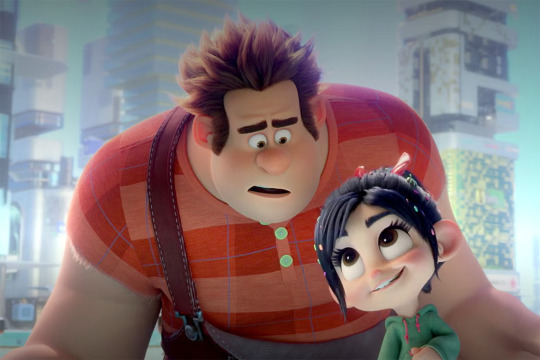
Fig.1 - Ralph and Vanellope
Encanto and Feminist Ideas Through Family Roles
Disney’s Encanto (2021), provides us with a view into gender expectations and family roles and dynamics while challenging traditional notions of femininity and masculinity. The story centers around the Madrigal family where everyone possesses a unique gift apart from Mirabel, the protagonist who all live in Colombia.
Luisa, Mirabel’s older sister has the power of super-strength and often feel burdened by the societal expectation that come along with it i.e. being the family’s unyielding pillar of support. During the song ‘Surface Pressure’ one can see the pressure she has to deal with on a daily basis. She is supposed to behave stoic, strong and masculine despite being a woman, an example of healthy versus toxic expressions of strength (Dossier, 2022). It seems quite similar to societal demands for resilience and selflessness men are forced into in patriarchal systems.
Conversely, Isabela the eldest sister, often praised for her beauty and perfection is forced to follow societal conventions of feminine beauty and always expected to appear flawless. Her superpower is to be able to create beautiful flowers and plants which again are ideals associated with conventional feminine ideas. Eventually in the song ‘What else can I do?’ she is intrigues by growing a cactus instead of rows of roses and focus on what she wanted to do instead of what was expected of her challenging the stereotype of femininity being ornamental. We can also see the burden she bears when she sings as says she’s sick of pretty and she wants something true. Towards the end of the song, as we se Isabela breaking past the expectations and being herself which starts repairing the cracks in the Madrigal house which can be interpreted as the characters healing from the trauma she has faced.
Finally Mirabel, who does not possess any powers like her sisters defies many tropes of being the hero. Her lack of powers can be seen as a metaphor for rejecting any external markers of self-worth and hammering in the idea that self-worth comes from within. Unlike many traditional heroes that come to the rescue, Mirabel’s emotional intelligence is what saves the family from the crisis subverting common Disney hero tropes.
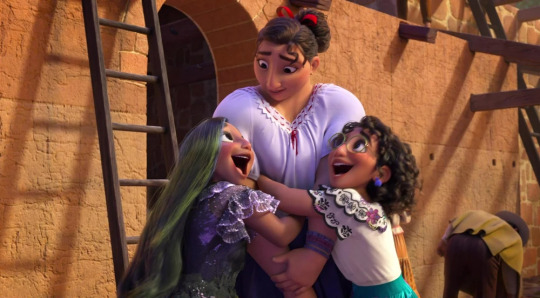
Fig.2- From left to right- Isabela, Luisa and Mirabel
Conclusion
Ralph Breaks the Internet and Encanto, reflects a shift towards incorporating Feminist themes and re-examining gender norms. These movie are a great starting point for discussing themes of gender normativity and feminism providing us with diverse characters and traits. However, talking about such complex societal problems can be tough and often important aspects can be overlooked.
After looking at these movies it also made me question as to why it might be hard to discuss such complex topics. Eye opening as they are, they do not successfully tackle the issues. Dosser (2022) talks about how ‘Ralph Breaks the Internet’ while trying to comment on toxic masculinity accidentally feeds back into it by showing Ralph as a protector in the climax. Along with this a self transformation just does not fix such issues without taking into consideration the norms and expectations that surround us (Dosser, 2022). On thinking about it one thing that struck me was that a lot of these films are catered towards a very young audience. Maybe the surface level exploration is some movie is to be able to create a sense of curiosity in children’s minds or rather to make it digestible so that children can understand the basic concept of toxic masculinity before trying to understand everything else that might cause it.
Citations:
Fig.1- Singer, M. (2018) ‘Ralph Breaks the Internet is a better movie than Wreck-It Ralph in every way’, Slate, 21 November. Available at: https://slate.com/culture/2018/11/ralph-breaks-the-internet-movie-review-wreck-it-sequel.html (Accessed: 6th January, 2025).
Fig.2 - Fandom (n.d.) Madrigal Sisters hugging [Online image]. Available at: https://shipping.fandom.com/wiki/Madrigal_Sisters?file=Madrigal_Sisters_hugging.png (Accessed: 6 January 2025).
Grisard, D. (2017). Pink boys: colouring gender, gendering affect. NORMA, 13(3–4), 227–249. https://doi.org/10.1080/18902138.2017.1312956
Dosser, M. (2022). I’m gonna wreck it, again: the false dichotomy of “healthy” and “toxic” masculinity in Ralph Breaks the Internet. Critical Studies in Media Communication, 39(4), 333–346. https://doi.org/10.1080/15295036.2022.2067347
0 notes
Text
Blogpost #8: Representation of Race and Ethnic Groups in Recent Disney Movies.
Disney animated films has been a huge part of my childhood even now have continued to entertain and inspire me. In fact, the success of the original Snow White and the Seven Dwarfs animated film released in 1937 can be credited for the success of Disney till this date. However, the themes and premises of such movies can be seen as harmful and dated particularly in how it represents diversity and inclusivity. As a child, I never questioned issues like racial bias or sexism but as I grew older and educated myself about such issues I realised that their older films are quite traditional in terms of narratives conforming to societal norms. However, in recent years they have seen a significant change when it comes to gender, race and ethnical backgrounds which is what I would like to talk about in this blog in two parts.
The Shift in Racial and Ethnic Representation
Disney films have been often critiqued for their underrepresentation when it comes to people of colour and once can see this in their older works. This has posed to be a problem for a long time since these movies are created majorly for a young and impressionable audience. Martins et al. talk about the importance of representation of different ethnic and racial groups as this shapes and influences children’s attitudes and self-perception (Martins et al, 2024). However, it seems like in recent years the public outcry for the need of representation has been addressed by Disney in their recent animated and live action works of Moana (2016), Encanto (2021) and The Little Mermaid (2023) to name a few. These movies celebrate the cultures of people of colour along with Polynesian and Columbian heritages.
Moana in particular does an excellent job in depicting Polynesian mythology and maritime traditions. Moana is shown as a smart and skillful character who weathers the storm and restores balance to her community. She is her own person, not a counterpart with distinct character traits and does not fall victim to to being ‘the other’ which older characters like Pocahontas are shown as (Bauman, 1991). Moana is a protagonist that shows agency along personal depth.

Fig.1 Image taken from https://www.buzzfeed.com/morgansloss1/moana-polynesian-details . This article by Morgan Sloss points out the accurate visual depiction of Polynesian culture, the symbolism and semiotics behind design choices.
These efforts are although recognised, are subject to ‘oversimplification’ i.e. reducing complex societal and cultural structures to simple digestible ideas for a general public or consumer (Martins et al, 2024). Encanto (2021) is one such problem. While the movie manages to show the beautiful culture and familial bonds of the Columbian cultures along displaying the nation’s war torn conditions, it fails to show socio-political issues in a greater sense skirting around the problems of racial and sexual discrimination that the nation faces.
“She reminded me of the paisa women I used to see every morning on my way to school. They gathered in the main park drinking coffee after leaving church to lament and criticize the students who got pregnant, the wives who separated from their “brilliant husbands”, or those women who were seen participating in “immoral” sexual acts. Matrona Madrigal also reminded me of those paisa grandmothers who reject their darkest skin grandchildren. These women silence them, deny them gifts, and subject them to accusations and punishments in front of their lighter skin cousins or siblings. Right there, the film had the possibility of enunciating how in white-rural contexts, girls with magic like Mirabel lose their strength due to the internalization of racism and their darker skin tones. This rhetoric makes children like Mirabel believe negative stories about their body, hair, color, and ancestry. Secondly, the film could problematize the role of the uncle who lived hidden. He reminded me of the homosexual rural men who are expelled from their homes because they do not follow the heteronormative and imposed ways of feeling for and loving others.” (Palacios Quejada, 2022)
Conclusion:
Despite the progress that Disney has made, the recent films have received their fair share of criticism. While making a fair attempt at showing diverse characters and representing different cultures and heritages, fans and critics perceive these attempts as a marketing strategy rather than accurate representation. I do appreciate their efforts in showing these different characters and characters that have a skin colour similar to mine. However, after coming across Quejada’s article about the underrepresentation of the socio- political issues it raised some alarm bells.
This made me think about the idea of ‘tokenism’ which can be referred to as the lack of substantial character narrative or development for characters only to appeal certain demographics and groups (Taylor and Glitsos, 2021). In my opinion this might be a rather harsh view for said Disney characters but it does certainly raise some questions.
Citation:
Bauman, Z. (1991) 'A Sociological Theory of Postmodernity', Thesis Eleven, 29(1), pp. 33–46.
Martins, N., Mares, M. L., Booth, M., & McClain, A. (2024). Children’s perceptions of race and ethnicity in media: a 25-year update to children now. Journal of Applied Communication Research, 52(5), 555–575. https://doi.org/10.1080/00909882.2024.2389853
Palacios Quejada, G. (2022) 'Depicting Race Without Racism: The Disconnect Between My Home Country and Disney’s “Encanto”', USC American Language Institute Blog, 5 July. Available at: https://ali.usc.edu/blog/depicting-race-without-racism-the-disconnect-between-my-home-country-and-disneys-encanto/ (Accessed: 5 January 2025).
Taylor, J., & Glitsos, L. (2021). “Having it both ways”: containing the champions of feminism in female-led origin and solo superhero films. Feminist Media Studies, 23(2), 656–670. https://doi.org/10.1080/14680777.2021.1986096
Sloss, M. (2021) '12 Hidden Details In Moana That Show The Beauty Of Polynesian Culture', BuzzFeed, 13 December. Available at: https://www.buzzfeed.com/morgansloss1/moana-polynesian-details (Accessed: 5 January 2025).
0 notes
Text
Blogpost #7: Immersion and Interaction in VR Games
In recent years, digital media has evolved at an surprising rate and due to this phenomenon we find ourselves at the crossroads of immersion and interactivity and and one such digital medium which takes the best parts of both, virtual reality or ‘VR’. VR encourages participation from the player but immersing them in environments and interacting with them. In this blogpost, I would like to analyze the VR game ‘Green Hell’ and see how immersion and interactivity come into play.
‘Green Hell’ is a VR survival simulator game where you play as Jake Higgins an anthropologist that finds himself in the Amazon Jungle. Your goal here is to familiarize yourself to your surroundings and find your wife who you have lost somewhere in the jungle and your only contact with her is through a radio.
youtube
Semiotics, Realism and Immersion in the VR system
VR systems are complex sign systems working together to relay an experience or narrative to the player. The meaning and narrative is created for the play and by the player by the interaction between factors like syntax, semantics and pragmatics. As the protagonist, you actively take part in the mean-making of the larger narrative in such VR environments (Baricelli et al, 2016). The open world nature of the game makes you feel like a performer rather than a passive recipient and you are given the choice to create your own narratives within the larger narrative creating a sense of ownership. In contrast, traditional narratives only take you through what the creator of the narrative wants you to see. This adds to the whole immersion of the game as you, the performer have to find your own meaning, interact with the environment to find out how to create shelter, find food and survive creating a multi-sensory and spatial experience that traditional media finds difficult to replicate.
The realism achieved by the games developers are quite astounding as well. The graphics of the game are quite realistic as one is surrounded with lush forestry, dynamic lighting and environmental effects. The sound design of the game feels accurate as well. One can hear rustling of leaves, rain and the sounds of animals and predators in the distance based on the players position creating a spatial auditory experience. For survival, players need to build a shelter, find food and make conscious decisions as some could be fatal too. All of these signs play together creating an immersive environment as discussed by Baricelli et al.
The survival mechanics of the game come into play adding a new layer of narrative and immersion as well. As a protagonist experiencing the world around them, one has to constantly monitor their hunger, thirst and energy needs. The weather and time of day play an important role too as during nighttime having a fire lit can invite unwanted attention. All these sign systems come together creating a heightened sense of alertness immersion the player deeper into the narrative.
Interactivity and Immersion
The interactivity of the game is intuitive as well and can be seen across actions picking up objects, breaking stones to cut trees, fishing, defending yourself against threats like predators and other humans inhabiting the forest. This conforms with ‘Presentation’ storytelling which Dubbelman describes as storytelling where players can influence their narrative through interaction (Dubbelman, 2011).
Players are also required to check their virtual bodies constantly as a result of the harsh environment as once can easily be cut by the terrain, get infection and have leeches stuck to their arms and legs contributing to the interactivity with ones body in the virtual space. Semiotics come into play as well in the environment such as animal tracks helping in finding food and prey as well as weather patterns helping the player analyze and decide their next move.

Fig.1 - Leeches on the players virtual body

Fig.2 Building a shelter
Conclusion
Green Hell does a great job in delivering a narrative is a immersive and interactive way while allowing a level of creative freedom to a player to experience the narrative. The spatial storytelling is able to comfortably relay a sense of realism through both audio and visual elements. VR being one of the leading and growing technologies in delivering holistic experiences has a high level of immersion and this being Green Hell’s medium of storytelling feels new. If the same storytelling was done via traditional mediums, I feel that it might have been forgotten due to the vast number of narratives that follow similar tropes such as Jumanji and Journey. If I were to talk away some key understandings from this, it would be how the game handles its semiotics and how it makes the narrative extremely immersive. The intuitive and interactive nature of the player and the environment is commendable as one can jump into the game and learn how to navigate it fairly easily.
Citations:
Dubbelman, T. (2011). Playing the hero: How games take the concept of storytelling from representation to presentation. Journal of Media Practice, 12(2), 157–172. https://doi.org/10.1386/jmpr.12.2.157_1
Barricelli, B. R., Gadia, D., Rizzi, A., & Marini, D. L. R. (2016). Semiotics of virtual reality as a communication process. Behaviour & Information Technology, 35(11), 879–896. https://doi.org/10.1080/0144929X.2016.1212092
Fig.1 and Fig.2 taken from YouTube. (2023). Green Hell VR - Official Launch Trailer. [online video] Available at: https://www.youtube.com/watch?v=C9Z1aCWMEsY [Accessed 5 January 2025].
1 note
·
View note
Text
Blogpost #6: The Male Gaze in the Gacha Games Industry
The Gacha games industry is notorious for making games that are catered towards a male audience. While having stunning visuals and engaging stories, games like Genshin Impact, Wuthering Waves and Arknights have found success in recent years. However, by looking closer one can clearly see the underlying themes of benevolent and hostile sexism—concepts explored in Kawaii Killers and Femme Fatales: A Textual Analysis of Female Characters Signifying Benevolent and Hostile Sexism in Video Games by Tompkins et al. (2020).
Benevolent Sexism in Gacha Games
Benevolent sexism can be defined as a seemingly positive view of women that solidifies existing stereotypical gender roles. Female characters described in such a way are often describe as passive and dependent. We can see examples of benevolent sexism in ‘Genshin Impact’ in characters like Amber and Barbara. Amber is portrayed as a cheerful and energetic ‘cheerleader’ character providing guidance for the protagonist Aether. She is shown as a caregiver often there to mostly assist the male protagonist in the narrative. Barbara is portrayed as a ‘pure’ and ‘innocent’ and in the greater narrative serves as a depiction of purity and selflessness. This translates to a lack of agency and a reinforcement to the nurturing stereotype associate with female characters (Tompkins et al, 2020). We also see similarities in Arknights, Shining is portrayed as a character with values of selflessness and a desire to protect other again reinforcing the caregiver stereotype.

Fig.1 , Amber from Genshin Impact

Fig.2 , Barbara From Genshin Impact
Hostile Sexism in Gacha Games
Hostile sexism can be defined as extreme and negative portrayals of female characters often seen as threats or things to be conquered. These characters are reflected as morally ambiguous and manipulative depicting women who don’t conform to societal gender roles (Tompkins et al, 2020).
‘La Signora’ from Genshin Impact is one such victim of hostile sexism introduced to the player as a manipulative person trying to snatch away a prized possession of another character. She is essentially a ‘femme fatale’ character whose power is defined by conning another male character. Her seductive mannerisms and designs add onto this by showing her as a villain exemplifying how women who go against norms are dangerous. Her antagonistic nature aligns with hostile sexism as she poses a challenge to the male protagonist. Veronica, a character from the game Wuthering waves also falls victim to hostile sexism. Much like La Signora, she is highly sexualised and seductive, showing her as evil and a force to be reckoned embodying hostile sexism.
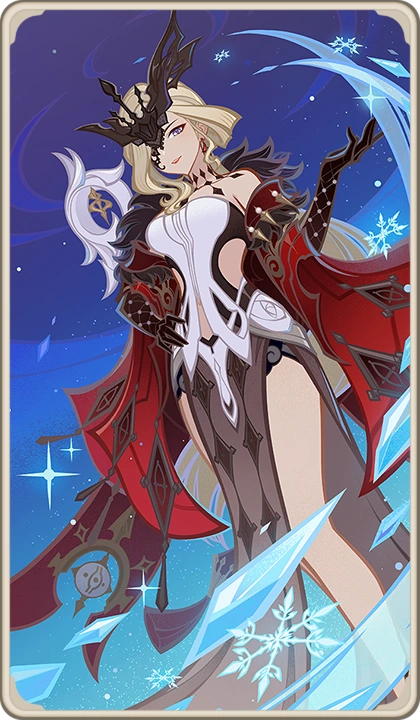
Fig.3 La Signora from Genshin Impact
The Male Gaze and Objectification
Gacha games like Genshin Impact, Wuthering Waves, Arknights often cater to a male audience. Characters here are viewed as commodities and objects of desire to be owned. One common factor that can be seen across all these games would be the ratio of male to female characters being unbalanced. These games often have time limited events to acquire such characters and being male dominated, the characters that sell the most are females. If not all, most of the female characters are highly sexualised wearing revealing outfits and having over the top designs. This is again done to cater to the male gaze as objects or commodities. In Genshin Impact, there have been events that sell skins to the players for monetisation and are even more revealing that the original outfits. To add on, there have been tweaks by the developers to the base designs of characters like Jean, Amber, Mona and Rosaria in an attempt to reduce how highly sexualised the character designs were.
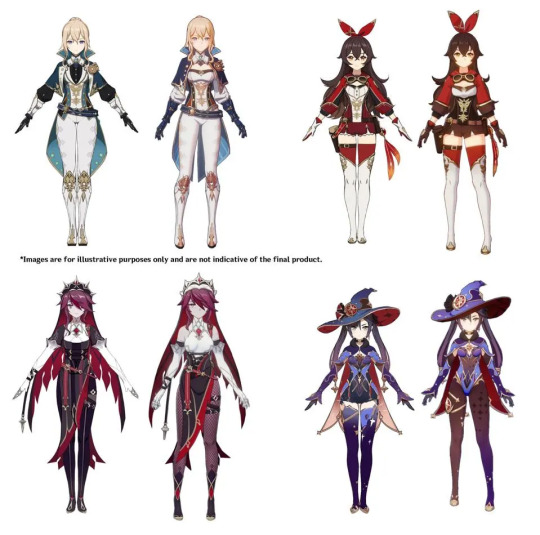
Fig.4
Conclusion
After looking at these games its clear to see that the representation of females in these games are deeply intertwined with hostile and benevolent sexism. To add insult to injury, the monetisation of these games heavily rely on the male gaze and the objectification of women. The constant sexualisation of female characters often turn away a female audience which creates the gender disparity in the player population and continue to cater to the male gaze. This is not to say that there are no good portrayals of female characters but the objectification overshadows it. As the gaming industry evolves, it is important to be more inclusive of characters that move beyond gender norms and strive to portray more empowering images of female characters.
Citation:
Tompkins, J. E., Lynch, T., Van Driel, I. I., & Fritz, N. (2020). Kawaii Killers and Femme Fatales: A Textual Analysis of Female Characters Signifying Benevolent and Hostile Sexism in Video Games. Journal of Broadcasting & Electronic Media, 64(2), 236–254. https://doi.org/10.1080/08838151.2020.1718960
Laura Mulvey, Visual Pleasure and Narrative Cinema, Screen, Volume 16, Issue 3, Autumn 1975, Pages 6–18, https://doi.org/10.1093/screen/16.3.6
Fig.1 Gamerant, 2022. Genshin Impact Amber. Available at: https://static0.gamerantimages.com/wordpress/wp-content/uploads/2022/08/Genshin-Impact-Amber.jpg?q=50&fit=crop&w=1140&h=&dpr=1.5 [Accessed 4 January 2025].
Fig.2 Genshin Impact Wiki, 2022. Barbara Wish. Available at: https://genshin-impact.fandom.com/wiki/Barbara/Gallery?file=Barbara_Wish.png [Accessed 4 January 2025].
Fig.3 Genshin Impact Wiki, 2022. La Signora Character Card. Available at: https://genshin-impact.fandom.com/wiki/Signora/Gallery?file=La_Signora_Character_Card.png [Accessed 4 January 2025
Fig.4 Tassi, P., 2022. Genshin Impact is starting to censor some of its women characters. Forbes. Available at: https://www.forbes.com/sites/paultassi/2022/01/06/genshin-impact-is-starting-to-censor-some-of-its-women-characters/ [Accessed 4 January 2025].
3 notes
·
View notes
Text
Blogpost #5: The Depictions of Robot’s Multiple Realities.
In this blog I would like to look at reality of the character, ‘Robot’ or ‘Rudolph Connors’ from the Amazon Prime Series ‘Invincible’ through the lens of Baudrillard’s Order of Simulacra. Lets first start with what exactly is reality?
Sayem describes it as the entirety of what literally exists whether it be perceived, conceived or even understood by human beings (Sayem, 2019). I personally feel that in the hyper realistic world that we exist in, realism is perceived through layers. What is real and what is not can differ from person to person as it depends on their worldview. One might be in love with a fictional character while refusing to believe that ghosts or extra-terrestrials exist. The world of Invincible, there is more fiction than fact but to the characters in that world, it is real to them. There are alien invasions and super heroes that can be actively viewed going about their daily lives. Now lets take a look at Robot and how he fits in this puzzle.
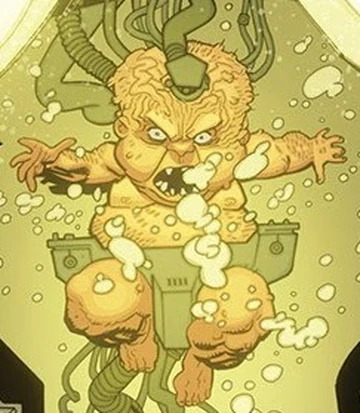
Image of Rudolf Connors taken from https://hero.fandom.com/wiki/Rudolph_Conners_(Alternate)
The first stage of representation is a faithful copy. Baudrillard says that this representation is supposed to faithfully mimic what we see as real life or in this case what Rudolph Connors sees as real life (Baudrillard, 1981) . His world or reality is quite limited to that of what he can see from his protective shell (which is pretty much the room he lives in) since he has a life threatening disease that doesn’t allow his body to come in contact with air. However he does possess the knowledge that there is much more to reality than his protective shell or technology. Only a few characters and the viewer themselves know his true origin and his real self.

‘Robot’, image taken from https://amazon-invincible.fandom.com/wiki/Robot?file=RobotProfile.png
The second stage of representation is the perversion of reality. Baudrillard says that at this stage the represented reality is portrayed as a distorted form of itself (Baudrillard, 1981). Until a certain point, Rudolf is only know as Robot. He remotely controls an automaton through technopathy which allows him to to see the extended reality around him. His identity is more that of Robot than of his real identity. Robot behaves like a human attempting to make human connections with this sort of virtual reality he has constructed. However this virtual reality perceived by him is the reality of the other characters or the realty as we know it. As the plot progresses Robot is able to snatch the DNA of another character Rex which brings us to the next representation.

Rudolf Conners as Rex (image taken from https://amazon-invincible.fandom.com/wiki/Robot?file=Rudy+Conners.png )
The third stage of representation being pretending to represent reality. Baudrillard says that at this stage, the representation is no longer real and the roots to that reality are lost and it is rather a fake representation of reality (Baudrillard, 1981). Rudolf after having taken Rex’s DNA manages to clone it and create a whole new body for himself. He transfers his reality of his protective shell to the new body while the body is rather a representation of Rex. This new reality or the lack there of pretends to be both Rudolf and Rex. While this new reality exists, so does the reality perceived by ‘Robot’ does.

Image of Rex-Splode taken from
Finally, Baudrillard describes the fourth stage to be a pure Simulacra where the representation has no ties to its reality and becomes the truth itself (Baudrillard, 1981). As the comics progress, Rex eventually dies trying to save Robot and another character, Monster Girl and eventually Robot takes the name of Rex severing his ties with Rudolph’s reality.
In conclusion, Rudolph eventually alters his realities so much that he eventually starts living in a hyperreal world of his own creation. His ties with his initial reality are completely cut and he no longer is himself but rather his truth changes to that of being Rex.
Citation:
Sayem, M.A., 2019. The Theory of Reality: A Critical & Philosophical Elaboration. [online] ResearchGate. Available at: https://www.researchgate.net/publication/335467809_The_Theory_of_Reality_A_Critical_Philosophical_Elaboration [Accessed 28 December 2024].
Baudrillard, J., 1981. Simulacra and Simulation. Translated by S.F. Glaser, 1994. Ann Arbor: University of Michigan Press.
2 notes
·
View notes
Text
BLOGPOST #4: A Semiotic Analysis of Homelander from ‘The Boys’
The Boys is a amazon prime video show that was adapted from the original comic the boys by Eric Kripke. On the surface the overarching theme of the show is about a group of superheroes but has much deeper connotations that one realises as they watch the show. It is a sociopolitical commentary on the dangers of mega corporations, capitalism and extreme power when given to a single person. One of the central characters in the show is Homelander and in this blog I will discuss the connotations of the characters using Barthes’ framework of Denotations and Connotations.
Barthes expands on Saussure’s signifier and signified which is limited to language and linguistics and talks about the Signifier and signified in a more cultural sense i.e. but not limited to advertising, media, fashion, etc (De Saussure, 1916) He defines denotations as the literal, straight forward and direct meaning of a what a signifier represents. On the other hand connotations are described as second layer of the signified which have deeper cultural roots and meanings. These together combined is what he describes as ‘myths’ (Barthes,2009).
Denotations:
Here are some images of Homelander played by the actor Antony Starr from the show. He looks muscular, has blonde hair and blue eyes and is sporting an outfit which blue in colour, his cape is the american flag and has overall golden accents. He also wears gloves and boots that have a maroon colour. There is also an emphasis around his crotch area. In this image (Fig 1.) his stance is stoic, with his hands behind his back as he gazes into the distance and in Fig.2 , he is in action possibly in the midst of a dynamic landing.
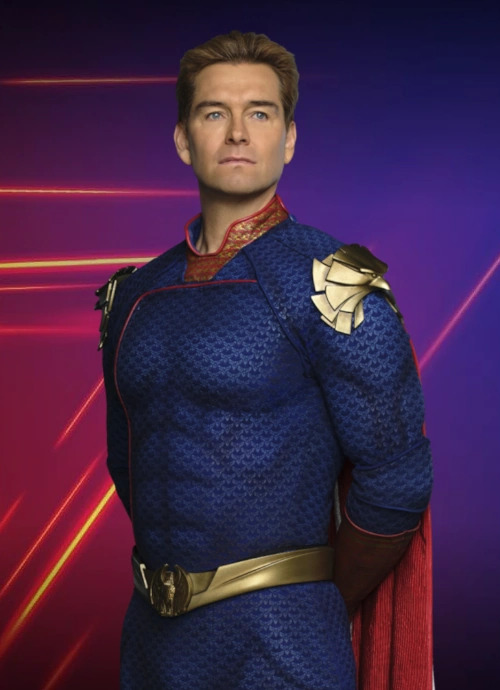
Fig.1

Fig.2
Connotations:
As a character Homelander is essentially a parody of the well known DC comics character, Superman but with much more nuances. Both the characters share the same superpowers, i.e. inhuman strength, x-ray vision, the ability to fly to name a few. While Superman is depicted as a pure soul who is virtuous, helpful and an ideal representation of a man who uses his power for good, Homelander is a rather twisted and complex character.
Lets first establish the context, Homelander is a ‘product’ of the multibillion dollar company Vought who have employed many others like him. He was created in a lab and has never really known the true love of parents. Often throughout the movie, he shows sign of having an Oedipus complex (we can see him lying on Madelyn’s lap as she rubs his head las though he is a little child) often having a creepy infatuation towards Madeline along with resentment towards her baby. (Fig.3)

Fig 3. (Screenshot taken from Amazon Prime Video’s ‘The Boys’)
Homelander has a god-complex and this leads to him feeling superior everyone else. One famous scene that really shows this in his meltdown on live television where he claims he is better than everyone and everyone needs him. This is also shown in his actions throughout the movie having no regard for any life apart from his own. Adding onto this, he is a corporate puppet especially in the first season when he shoots down a airplane with a senator and his child along with others in it on the request of Vought as the senator seemingly had some dirt on the megacorp. A great way of showing what lengths these companies will got to protect their social image, products and branding now matter how dart and disturbing things are behind the scene. He is also emotionally unstable and volatile in his interactions with others and provides absolutely no room for criticism.
His character is also a commentary on authoritarian figures like Trump who both possess power and charisma and use them to position themselves as the savior of their people. He is worshipped and a god and his supporters have blind faith in him. His outfit screams ‘American patriotism’ and that he is an ideal American man when we look at the eagles and the countries flag plastered over him. The casting of Antony Starr is also perfect as he play Homelander with blonde hair (even though that is not the original hair colour of the actor) sets a precent for what an ideal American looks like. He is also a symbol of right wing politics and media and his supporters have blind faith in him which disables them from seeing his true character. We can see him vilifying and entity that opposed him and branding them as the negative part of society, as evil that is hurting the common man’s sentiment. One clear instance of this is from where he lazers and kills a person (shown as a left winger in the lager narrative) who throws a water bottle at him which hits his son and he is killed instantly by Homelander in from of a right wing mob. Instead of questioning him, they instantly cheer and validate his actions (Fig.4). Homelander also shares xenophobic ideas similar to multiple real-life counterparts and this can be seen evidently when he scoffs at the idea of having a Muslim hero join the elite group of heroes ’The Seven’ as that is not ‘American’.
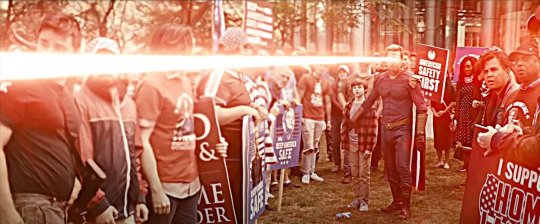
Fig.4 (Screenshot taken from Amazon Prime Video’s ‘The Boys’)
Closing Notes:
Homelander on the surface is supposed to be a virtuous hero who works for the justice and protection of man. He is also portrayed in media or rather carefully crafted by media as such but in reality, he is narcissistic, self centered and xenophobic. He is a perfect example of what happens when too much power is given to a single entity. He is a commentary on real world politics, media and capitalism and the power hungry nature of them. He embodies what we know as a psychopath, showing no remorse, having no moral compass and not an ounce of thought or regret put into his actions.
However this being said, I think the character of Homelander is complex yet a great at showing the audience what a real superhero might be in a world filled with capitalism and divided by politics. Hero serves the purpose of a hero while actually leaning more towards being a super-villain a this semiotic analysis helped me understand the myths behind such a character. Hopefully I will be able to use these hidden truths in enabling characters I employ in my work more multifaceted. I also have learnt how these hidden truths contribute to the bias of Homelander and these biases are what makes him less of a superhero and more of a super villain.
Citation:
Barthes, R., 2009. Mythologies. London: Vintage.
Saussure, F. de, (1916). Course in general linguistics. New York, NY: Philosophical Library.
Fandom, 2024. Homelander Season 4 image [online image]. The Boys Wiki. Available at: https://the-boys.fandom.com/wiki/Homelander?file=Homelander-S4.png (Accessed: 9 November 2024).
CBR, 2022. The Boys character lineup [online image]. CBR. Available at: https://static1.cbrimages.com/wordpress/wp-content/uploads/2022/07/the-boys-33.jpeg?q=50&fit=crop&w=1140&h=&dpr=1.5 (Accessed: 9 November 2024).
Kripke, E. (2024) The Boys [Screenshot]. Amazon Prime Video. Available at: https://www.amazon.com/ (Accessed: 9 November 2024).
0 notes
Text
Blogpost #3:
Can the storytelling of the video game Zenless Zone Zero be considered transmedia storytelling?
Through this blog post, I would like to examine the storytelling and gameplay aspects of the video game Zenless Zone Zero and see if it qualifies as transmedia storytelling. To do that, let's establish what exactly transmedia storytelling is. According to Henry Jenkins, “Transmedia storytelling represents a process where integral elements of a fiction get dispersed systematically across multiple delivery channels for the purpose of creating a unified and coordinated entertainment experience” (Jenkins, 2007). In other words, the reader or viewer does not have access to all elements of a story through any single medium. Rather, information is available through exploring different mediums. All transmedia storytelling has aspects of radical intertextuality along with multimodality. Radical intertextuality can be described as the movement of characters, events, or signs across different textual structures within the same medium; these entities exist in more than one textual structure at a time. On the other hand, multimodality can be defined as these signs and characters appearing in different mediums, with the medium influencing the character to some extent (Jenkins, 2011). These are the lenses that we will be using to examine the game. I will also abbreviate the game and refer to it as ZZZ here on.
Intro to ZZZ
Zenless Zone Zero, or ZZZ, is a video game launched in July 2024 by the popular game studio Hoyoverse. The game is story-based, where the player takes on the role of a video store manager named ‘Belle/Wise’ (depending on the player's choice) in a post-apocalyptic world engulfed by natural disasters. The protagonist, along with their video store job located in New Eridu, serves as a guide through these hollows, assisting people and completing various other tasks. Through these explorations, the protagonist meets other characters with unique stories and forms relationships with them.
Radical Intertextuality in ZZZ
The main story of the game is told through missions and companion events. As the protagonist, you explore areas with other in-game characters, and with each quest or event, you learn more about the characters and the region's story. Since the game is still in its early days, not much is known about the history of the disaster, and small bits of the story are unveiled as you play. The storytelling is also presented via a graphic novel/comic book format found within the game itself (fig. 2). However, a significant amount of storytelling occurs outside the game as well. The developers frequently release trailers about the characters that contain information, lore, and history not found in-game. For example, the ‘Where the Miracle Began’ teaser includes information about some characters that aren't currently present in-game (fig. 3). This also creates opportunities for players to engage in participatory media. There are also web events that take place outside the game, though they do not necessarily add to the game's story. This represents the extent of the radical intertextuality of ZZZ. For example, Genshin Impact, another game by the same developer, also has a manga that provides information separate from the game. It also features long-term collaboration projects with the animation studio Ufotable and will be launching its anime series in the near future. ZZZ, being a much newer game, has a similar potential for expanding its story into different media, but it’s hard to say for certain.
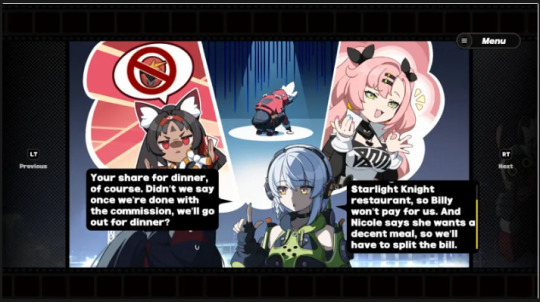
Fig.1
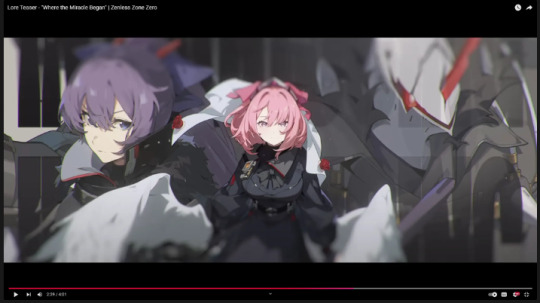
Fig.2
Multimodality of ZZZ
The storytelling aspects of ZZZ are very multimodal in nature. There are multiple aspects of the game that are inspired by pop-culture references along with a ton of ‘Easter eggs’ hidden away in different ways. The protagonist of the story runs a video store and sells or rents out copies of movies and documentaries to these customers. Here are some examples-
‘Starlight Knight’ which is essentially a parody of the well known Power Rangers Movies, films and comics.
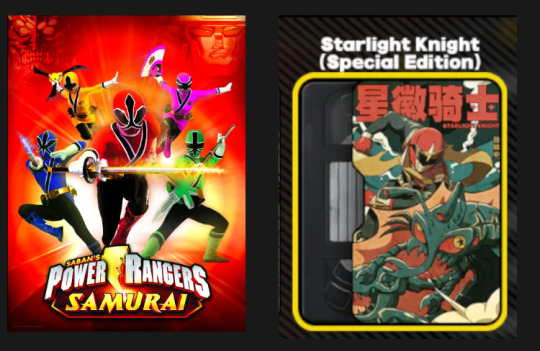
‘Family’ which is a direct reference to the ‘Fast and Furious’ series. We can also see a Vin Diesel like character art on the cover which I never realized was there.
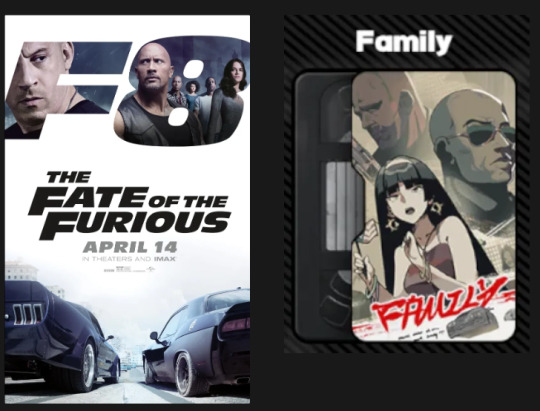
‘The Heartbeat’ seems to be a reference to the popular anime series Neon Genesis Evangelion.
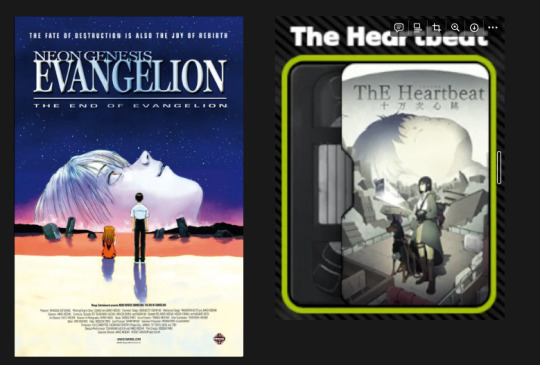
Coming back to the character trailers, specifically the character Burnice’s trailer, we can see multiple easter eggs to different social media trends over the years, here are a few examples-
Kaztotsky Kick dance found in other games like Team Fortress 2
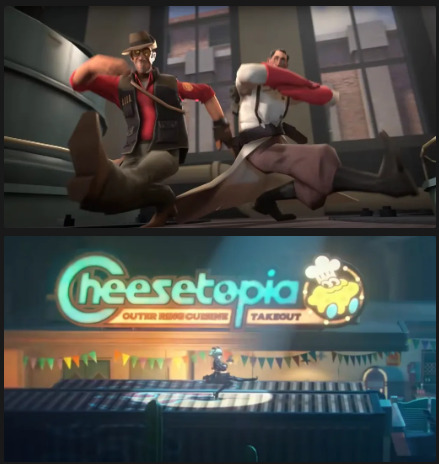
Beyonce’s ‘Single Ladies’ music video
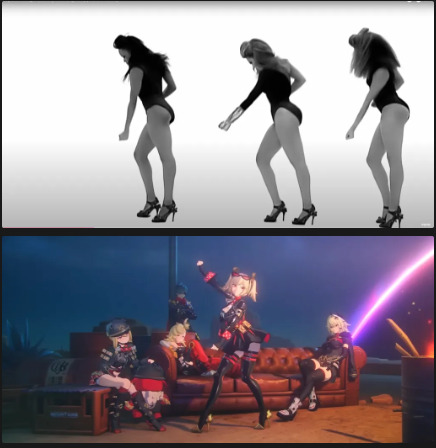
Gangnam Style Dance
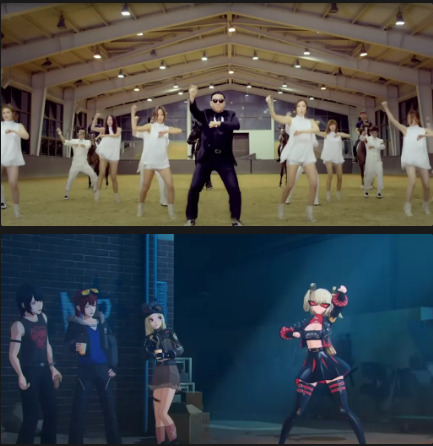
Conclusion:
Zenless Zone Zero does show properties of both multimodality and radical intertextuality. We can see that the characters exist in a complex world and have intricate interactions with one another through different events and story quests, each playing a part in the overarching narrative. This aligns with Jenkins's description of what a transmedia story is. However, I feel a little hesitant to claim that ZZZ’s storytelling qualifies as transmedia storytelling, particularly in terms of radical intertextuality; I believe the game is slightly lacking in this area. This can be attributed to how early the game is in its life cycle, but it also depends on the capital the game generates. Genshin Impact was able to portray its characters and story through multiple delivery channels due to its monetary success, and as we know, transmedia storytelling and capitalism often go hand in hand. ZZZ, however, is expanding its audience by commissioning artists, cosplayers, and selling licensed merchandise related to the game (plushies, figurines, toys, etc.).
After diving deep into the game and examining it through various lenses, I feel that my understanding of Easter eggs and why developers often hide them has grown. Though rare, Easter eggs can have a powerful effect on the viewer; they not only strengthen the bond with the media but can also help attract fans of other media as well.
Citation:
Jenkins, H. (2007). Transmedia Storytelling 101. [online] Henry Jenkins. Available at: https://henryjenkins.org/blog/2007/03/transmedia_storytelling_101.html.
Jenkins, H. (2011). Transmedia 202: Further Reflections — Pop Junctions. [online] Henry Jenkins. Available at: https://henryjenkins.org/blog/2011/08/defining_transmedia_further_re.html.
Natalie.TF. (2024). Zenless Zone Zero Review. [online] Available at: https://natalie.tf/2024/07/17/zenless-zone-zero-review/ [Accessed 27 Oct. 2024].
Zenless Zone Zero (2024). Lore Teaser - ‘Where the Miracle Began’ | Zenless Zone Zero. [online] YouTube. Available at: https://www.youtube.com/watch?v=UgeN7naPPz4 [Accessed 26 Oct. 2024].
IMDb. (2024). Power Rangers Samurai (2011). [online] Available at: https://www.imdb.com/title/tt1704503/mediaviewer/rm3766923520/?ref_=tt_ov_i [Accessed 27 Oct. 2024].
IMDb. (2017). The Fate of the Furious (2017). [online] Available at: https://www.imdb.com/title/tt4630562/mediaviewer/rm2675061248/?ref_=tt_ov_i [Accessed 27 Oct. 2024].
IMDb. (2024). Neon Genesis Evangelion: The End of Evangelion (1997). [online] Available at: https://www.imdb.com/title/tt0169858/mediaviewer/rm3864649985/?ref_=tt_ov_i [Accessed 27 Oct. 2024].
teamfortress (2015). Kazotsky Kick. [online] YouTube. Available at: https://www.youtube.com/watch?v=QDCPKBF7a1Q [Accessed 27 Oct. 2024].
Beyoncé (2009). Beyoncé - Single Ladies (Put a Ring on It) (Video Version). YouTube. Available at: https://www.youtube.com/watch?v=4m1EFMoRFvY.
officialpsy (2012). PSY - GANGNAM STYLE(강남스타일) M/V. YouTube. Available at: https://www.youtube.com/watch?v=9bZkp7q19f0.
0 notes
Text
Blogpost #2: Analyzing Jump Scares and How They Add to Immersion
I recently watched a Bollywood horror-comedy film called ‘Stree,’ which I found amusing for the lack of horror and a rather comedic take on the tale of an urban legend called ‘Nale Ba.’ The movie is inspired by the story of a ghost that would abduct men who are on their own, and a way to combat said phenomenon would be to write “O stree kal aana or nale ba” (which roughly translates to "please come tomorrow"), which the phantom/ghost would read and proceed to come the next day, continuing the cycle. Interestingly, the only time I felt a little scared was during the jump scares that often happened in the first person, where a head would just appear out of nowhere and scare you, or the phantom would suddenly appear behind or in front of the protagonist.
Anatomy of a Jump Scare
A jump scare relies on the unpreparedness of the audience and banks on a sudden intrusion into the characters' surroundings (Clasen, 2021). These jump scares often rely on a buildup showing glimpses of an imminent threat, a buildup of music or action that turns into sudden silence, followed by the sudden appearance of the threat. Sound plays a huge role in this buildup, as it is hard to counteract and takes time to fade away or escape from (Clasen, 2021). I think jump scares are very visceral to the immersion of the audience when watching a horror film. We mostly feel the fear of a jump scare through the protagonist, but every once in a while, there are jump scares that target the audience directly. It feels like the phantom or the ghost is breaking through the fourth wall, which adds to the immersion as though the viewer were a part of the film. Jump scares are also used to set a rhythm or to add or relieve tension for the viewer.
Jump scares can also be found beyond screens. They are widely used in haunted house tours to add a punch to an already spooky environment. Jack-in-the-box toys also use jump scares, where a creepy clown bounces out of a box to startle the viewer who opens the box. Although the first jump scare is said to have appeared in Mark Robson’s ‘Cat People’ in 1942, I believe Étienne-Gaspard Robert’s Phantasmagoria employed this style of horror much earlier. A Journal de Paris advertisement described the show as:
“Fantasmagorie … by citizen E-G. Robertson: apparitions of Spectres, Phantoms, and Ghosts, such as must appear or could appear at any time, in any place, and among any people. Experiments with the new fluid known by the name of Galvanism, whose application gives temporary movement to bodies whose life has departed. An artist noted for his talents will play the Harmonica.” (Meier, 2013)
This sounds a lot like jump scares which are used in modern cinema to this day. Jump scares are a very controlled means of startling or scaring the audience. There is very little to think about; you rather feel the immediate calculated threat. However, the overuse of them is slowly taking away from the effect they have on their audience, which is quite similar to what happened with laugh tracks. There has been a steady decline in jump scares in movies in recent years. Chris Catt, an editor at the online horror magazine Creepy Catalog, talks about how, due to the overuse of jump scares, audiences know when to expect them, which often might have quite the opposite effect on the viewer (Fowers and Tan, n.d.). I especially felt this way while watching ‘Stree’ as I could tell when a jump scare was coming. Instead of being on the edge of my seat and not giving me time to think about anything, I found myself laughing and looking at the CGI of the phantom.
I do, however, believe that jump scares still have an effect on an audience when done well. They are also more effective when the viewer does not expect them. The Conjuring series, in my opinion, does jump scares quite well; however, after watching the first movie, I could somewhat anticipate the jump scare and brace myself for it. For the audience that does not watch many horror movies, jump scares are quite effective, but for those who have built an immunity to them, not so much.
Citations:
Meier, A. (2013). Robertson’s Fantastic Phantasmagoria, An 18th Century Spectacle of Horror. [online] Atlas Obscura. Available at: https://www.atlasobscura.com/articles/robertsons-fantastic-phantasmagoria.
Clasen, M. (2021). The Science That Can Help You Tolerate the Worst Part of Horror Movies. [online] Slate Magazine. Available at: https://slate.com/culture/2021/10/how-jump-scares-work-and-how-to-tolerate-them.html.
Fowers, A. and Tan, S. (n.d.). Analysis | What’s Killing the Jump Scare? [online] Washington Post. Available at: https://www.washingtonpost.com/business/interactive/2023/jump-scare-horror-movies/.
0 notes
Text
Blogpost #1: Analyzing the Trope of ‘World Domination’ Narratives Through the Lens of Binary Oppositions
Through this blogpost, I would like to analyze the narrative of world domination, a very common trope employed in popular media and how they go hand in hand with Claude Levi Strauss’ theory of binary oppositions. For this, I will be looking at the Planet of the Apes franchise, the Marvel Avengers franchise, Plague Inc (a mobile game by Ndemic creations) and finally Risk (a game by Hasbro). I will be examining the various binary oppositions in each of these games and attempt to see if there is an overarching one amongst them.
When it comes to the trope of world domination, most narratives have a central character often followed by a group of people or a completely third party entity often in a non-human form such and aliens or divine beings. More often than not these characters are motivated to achieve world domination or domination over the other party due to reasons such as personal gain, revenge or even ideas that emphasize the rightful existence of one party over the other. Broadly speaking, these ideas are often polar just like the Strauss suggests such as good and bad, right and wrong, order and chaos etc. (The Media Insider, 2021). Now I would like to look at the movies and games and analyze them individually.
Planet of The Apes Franchise
In the planet of the apes, there are multiple binary oppositions in play. One of the first instances of binary oppositions we see is morality versus immorality when Will Rodman and Robert Franklin refuse to take the life of the baby chimpanzee later knows as Caesar after being ordered to do so by their superior. As the franchise progresses, we see two very polar sides i.e. the apes who are fighting for their freedom after all the abuse that they have been through and the humans who are the ones trying to regain control of the apes. We also see the spread of the Simian virus that wipes out about 90% of the human population. This can also be seen as a third party opposing humanity (science versus nature) while the overarching theme being apes versus the humans. Further down the line, there is a binary opposition in the form of peace versus war when Caesar who wants to co-exist with humans is opposed by his counterparts who want war and the take over the humans.
Plague Inc
Plague Inc is a strategy game created by Ndemic Creations where the aim of the player is to infect the world with a deadly virus and exterminate all humans. The overarching binary opposition would be good versus evil where the player is the evil one while the world governments and organizations such as WHO work towards finding a sure for the disease that you create. As you play the game some more subtle oppositions come up such as order versus anarchy where when the disease or virus causes governments to fall, humans start rioting causing chaos. Here, anarchy feeds into the evil making it stronger.

Fig.1 -A screenshot from the game
The Marvel Avengers Franchise
The Marvel Avengers franchise is one of the highest grossing franchises in history due to its widely loved characters and the story it brings to us. The avengers preach ideals such as justice and peace and are seen and shown as the good guys always fighting to prevail over the evil that manifests as villains such as Loki, Ultron, Thanos, etc. Throwing some light on Thanos, he is shown as an evil enitity who is on a quest to eradicate half of the worlds population as he believes that it would solve issues such as hunger and poverty. However this is opposed by the avengers who do not agree with his ways of doing so. In Infinity Wars, when the Guardians meet the Avengers for the first time, we are greeted with a fight scene where eventually both parties realize that they are both fighting against Thanos. However, their goals are different as Starlord is fighting to rescue his girlfriend (which is some way can be seen as fighting for personal reason) where as the avengers are fighting for the safety of Earth. However, these two parties end up combining their efforts under one unified cause, an example of two binary oppositions merging into one i.e. for greater good of mankind.
Risk
Risk is a strategy game by Hasbro where the goal of the player is to achieve world domination by defeating their enemies and forming alliances with other players. However these alliances do not last as eventually there is only one victor. The narrative here is quite lacking in terms of a complete structure but the game seems to be inspired by history as there are multiple versions of the games starring historical leaders like Napoleon. They also have versions of the game where you can play as the Rebel Alliance or the Galactic fleet from star wars, again a great example of good versus evil or dark versus light. The game can also be looked at through the lens of democracy versus dictatorship and peace versus war.

Closing comments and insights.
After analyzing these different media, I can comfortably say when it comes to the trope of world domination, there are often multiple binary oppositions that come to play. These binary oppositions however tend to aid either train of thought in the major narrative often making the viewer question their biases. For example, the production of the Alzheimer’s drug was sped up without the consent of the Will Rodman even though he advised against this. This was done for monetary gain which eventually brought about the fatal pandemic. Here greed won over morals and aided the cause of the apes. When looking at Thanos clearly shown as the villain, one could question whether he was a ‘necessary evil’ and to achieve an equilibrium that benefited everyone, there had to be a price to pay. His motives were ultimately not for personal gain or power but it was to ensure that everyone had enough to survive (Weyant, 2022). Most of these narratives fall under the umbrella of good versus evil but to classify them as so would take away from the smaller narratives and nuances of the characters. As mentioned before, these oppositions feed into each other and are like tributaries to a river, each having their own story but eventually feeding into the river of good versus evil.
While examining, I also realised that the ‘world domination’ narrative generally follows Todorov’s Narrative theory which takes place in a five act linear and chronological order . First we have an established equilibrium i.e. The Apes being caged and experimented upon (Planet of the Apes), Tony Stark enjoying a walk in the park (Avengers: Infinity Wars), the world being in its normal state with regular news like the release of books by authors (Plague Inc.) Then comes a disruption in the equilibrium, Caesar being able to say the word ‘No’ for the first time, the Children of Thanos making contact with Earth, the recognition of the spread of the virus or the disease. This is followed by disequilibrium which can be seen when the Avengers leave the planet in to attempt neutralizing Thanos’ threat, the Apes breaking free of their cages and running amok, the virus mutating and becoming fatal taking multiple lives and countries locking down borders. Penultimately, there is a struggle to repair or restore equilibrium shown as a final showdown between the two sides where the Avengers face Thanos and his army, the Apes face the Us Military and the WHO and multiple first world countries increase funding and research to cure the virus. Finally, there is a new equilibrium, the infamous Thanos snap reducing the population by half, Caesar and his fellow apes overpowering the military and going into the jungle, the extinction of humans in the case of Plague Inc (Todorov, 1971).
Citations
The Media Insider (2021). Binary Opposition: Claude Lévi-Strauss Media Studies Structural Theory explained. YouTube. Available at: https://www.youtube.com/watch?v=sO0O8IyMCBU
Weyant, J.E. (2022). MCU: Why Thanos Wasn’t The Bad Guy (And Why He Still Is). [online] Game Rant. Available at: https://gamerant.com/mcu-reasons-thanos-bad-guy-right/.
Todorov, T. (1971) ‘The 2 principles of narrative’, Diacritics, 1(1), pp. 37–44. Available at: https://doi.org/10.2307/464558 (Accessed: 6 January 2025).
IMDb (n.d.) Still from Inception (2010) [Online image]. Available at: https://www.imdb.com/title/tt1318514/mediaviewer/rm3713711872/ (Accessed: 6 January 2025).
MMOHuts (2016) Plague Inc: Evolved screenshot [Online image]. Available at: https://cdn.mmohuts.com/wp-content/uploads/2016/02/PlagueIncEvolvedReview6.jpg (Accessed: 6 January 2025).
0 notes